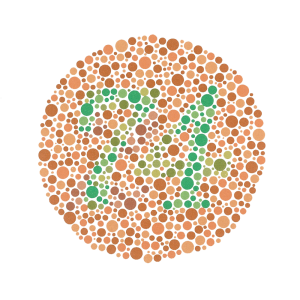The Future of Eye Exams is 20/20
More stories from Emily Langenberg
Many people are stepping out of doctor’s offices and into their living room when renewing their glasses or contacts prescription, as many companies now offer free (or nearly free) online eye exams without insurance. The process takes no more than ten minutes and only requires access to a computer and a smartphone to receive a prescription within 48 hours.
The exam, offered through 1-800-CONTACTS, starts by asking the patient to leave their contacts in or their glasses on. The patient is instructed to assess their current optic situation regarding how happy they are with their current prescription, ranging from “it could be stronger, is already too strong, or is simply out of date.”
The patient is then asked to set up their smartphone to act as a “remote” while taking the exam, which allows them to remain the required distance from their computer while still being able to toggle between screens. This is done by following a link in a text message that leads them to a page, which is then synced with their computer.
Once the patient has activated their “remote”, a standard outline of a credit card appears on screen. The patient is asked to place a physical card on top of the outline, which adjusts the size to match, ensuring the size proportions are properly calibrated.

A simple color-blindness test is conducted from a comfortable reading distance as several red and green bubbles reveal numbers for the participant to select on their phone, first by covering their right eye and then the left.
Following that initial test, the user is told how far away they need to be from the computer. Based on shoe size, the patient is given an exact number of heel-to-toe paces to walk. From this distance, the second exam begins.
As the screen across the room displays the letter “E” facing one of four ways, the patient is instructed to select the corresponding answer on their phone. The letters gradually get smaller and transfer to different parts of the screen, all while a female voice ensures the participant that it is okay to select “CAN’T TELL” on their remote if they are struggling to note the direction of the letter.
This continues, alternating between eyes, with guided breathing exercises in between to relax the eyes.

The final test challenges the patient’s perception by displaying a set of three “O’s” and an “X” in random order, asking the user to select which position the “X” is in while alternating sets between eyes.

Upon completion, the patient is asked to provide their current glasses or contacts prescription, either by entering it manually or texting a picture of their contact box(es) or previous written prescription.
Within 24 hours a real-life optometrist contacts the patient to confirm the prescription provided by the patient, discuss the new prescription written based on the test results, and to answer any questions that the patient may have.
While these exams cannot yet replace an annual trip to the optometrist, it is safe to say that the future of optic exams are about to get a little less blurry.



